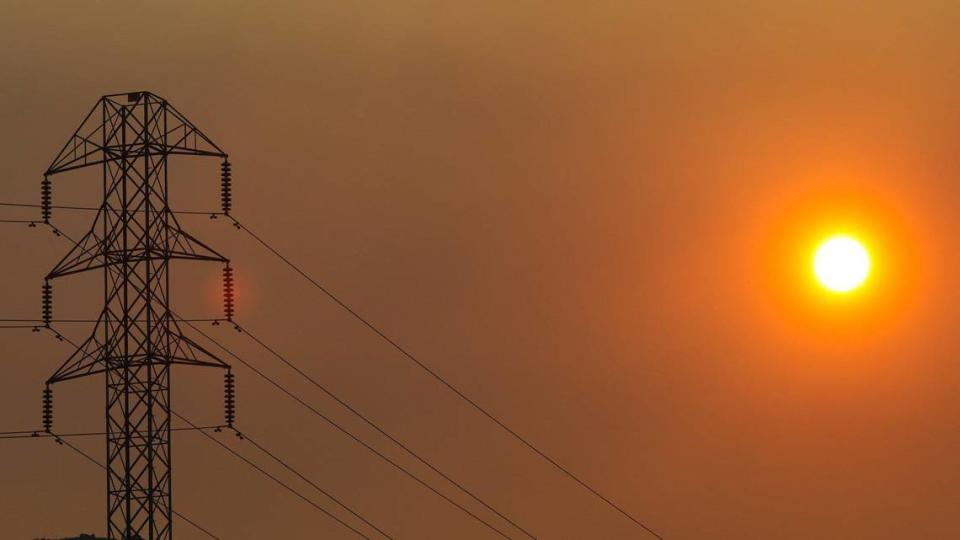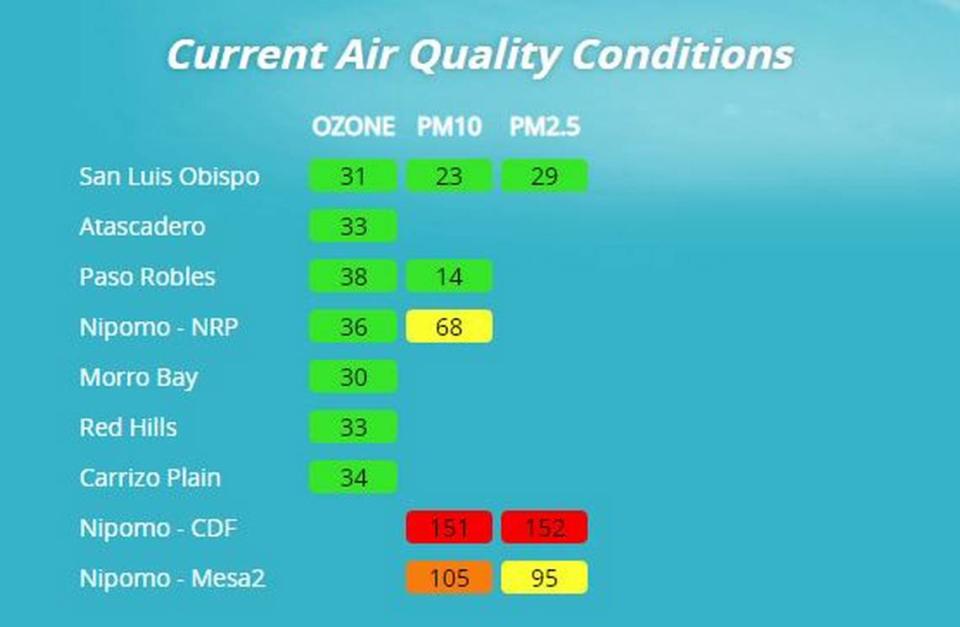SLO County has one of the highest asthma rates in California. These factors make it worse
Asthma rates in San Luis Obispo County are much higher than other California counties — and they’re steadily increasing.
SLO County ranks among the 25% of counties in that state with the highest rates of the respiratory disease, according to the San Luis Obispo County Department of Public Health.
Asthma is a lifelong disease that causes wheezing, breathlessness, chest tightness, and coughing, according to the Centers for Disease Control and Prevention.
Since 2014, asthma rates in SLO County have been steadily increasing, reflecting a nationwide trend, according to Public Health and the CDC.
In 2014, about 12% of adults in SLO County had asthma, according to Public Health.
Since then, that rate has almost doubled.
About 23% percent of adults had asthma in SLO County in 2021, the most recent data available, according to Public Health.
Asthma rates are highest among adults aged 18 to 44, as well as Hispanic or Latino adults, Public Health data show.
According to Breathe California CEO Tanya Payyappilly, whose California-based nonprofit that advocates for lung health, certain communities are at a greater risk for developing asthma and asthma-related symptoms such as children and adults in low-income communities, as well as communities of color.

Which factors can induce or worsen asthma?
While scientists aren’t sure why asthma is on the rise, there are certain factors that induce asthma and make symptoms worse.
A prevalence of these factors could be why asthma rates are so high in San Luis Obispo County, Payyappilly said.
One of the factors that can induce or worsen the symptoms of asthma is particle pollution caused by wildfire smoke, Payyappilly said.
Particulate matter is composed of solid or liquid droplets that can be inhaled and cause health problems, according to the United States Environmental Protection Agency.
“Wildfires cause big particulate matters to linger in the air and smoke travels,” Payyappilly said. “So if there’s a wildfire in a particular location, the smoke is going out to so many other places.”

The frequency and severity of wildfires along the West Coast have been steadily increasing over the past decade, largely in part to climate change, according to the California Air Resources Board, a government agency that aims to reduce air pollution.
“What we’ve seen in recent years is that western wildfires have really ramped up to hazardous levels, in some cases, of levels of particle pollution that residents are being exposed to,” said Will Barrett, national senior director for clean air advocacy at the American Lung Association.
In 2020, San Luis Obispo had the worst air quality in the world after smoke from wildfires in the Bay Area traveled south, according to IQAir, an air quality monitoring company.
In 2022, Cal Fire responded to 3,574 wildfires that burned more than 19,000 acres of land in California.
So far in 2023, Cal Fire has responded to 2,584 California wildfires burning more than 8,000 acres of land.

Exposure to ozone may cause respiratory disease
Long-term exposure to ozone, is known to provoke asthma symptoms, and is likely to be one of many causes of the disease, according to the EPA.
Ozone is both a natural and man-made gas that can cause adverse health affects when it is inhaled, according to the EPA.
“Ozone is formed in the atmosphere generally on hotter, sunnier days when emissions from tail pipes from traffic pollution, for example, mixes in the atmosphere and actually forms into ozone,” Barrett said.
“So to the extent that there’s warmer, sunnier weather and those raw ingredients for ozone formation are present in the community, that would lead to part of the challenge.”
In 2023, San Luis Obispo was ranked as the 21st most polluted city in the U.S. based on the number of high ozone days, according to the American Lung Association, a nonprofit organization that advocates for better lung health.
San Luis Obispo County had on average 11.3 high ozone days per year from 2019 to 2021, compared to an average of only 2.8 high ozone days per year in Santa Barbara County from 2019 to 2021, the American Lung Association said.
Climate change is only making the problem worse, Barrett said.
“Climate change is amplifying a lot of health challenges, a lot of disparities in communities across the world and the conditions that allow for ozone formation,” he said.

What can be done?
Although asthma cannot be cured, there are way to prevent asthma attacks and reduce symptoms when they occur, according to the CDC.
“One of the key things we recommend people do is check the local air quality on a daily basis,” Barrett said. “If the air is unhealthy to breathe you want to make sure that people have the tools and the information available to protect themselves.”
The San Luis Obispo County Air Pollution Control District posts daily air quality forecast maps.
Barrett also recommends that community members “speak with policymakers and local leaders about ways the community can clean up, whether that’s providing more incentives for walkable, bikeable or transit-oriented development or spurring the transition to zero emission technologies.”

